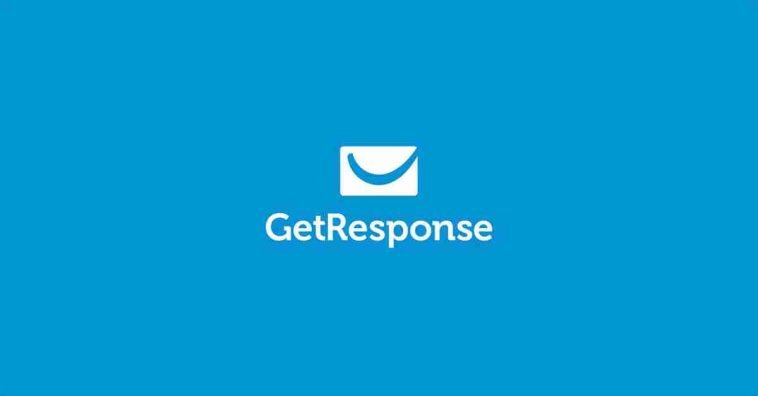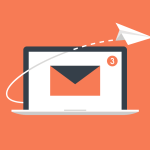Introduction.
If you’re interested in boosting your business with email marketing, you’re in the right place.
Using email marketing effectively can help you build strong connections with your audience, share valuable content, and ultimately increase sales.
And one tool that makes email marketing simple, yet incredibly effective, is GetResponse.
Why Email Marketing Matters
Email marketing might feel a bit old-school in today’s social media-driven world, but it remains one of the most effective marketing strategies out there.
For every $1 spent on email marketing, the average return is $42, which makes it one of the highest ROI-generating channels in digital marketing.
Beyond that, email marketing allows you to reach your audience directly—no algorithms, no guesswork. It’s a direct line to your subscribers, and that’s powerful.
With tools like GetResponse, businesses can run their email campaigns efficiently and enjoy an array of features such as automation, customizable templates, analytics, and much more.
Whether you’re just starting out or looking to upgrade your current approach, this guide will walk you through how to use GetResponse for effective email marketing.
How Do I Use Getresponse For Email Marketing?
1. Setting Up Your GetResponse Account.
Setting up your GetResponse account is straightforward. Once you sign up, GetResponse will walk you through the steps of creating your first campaign. After inputting your basic information, you’re ready to start exploring the platform.
2. Building Your Email List.
A solid email list is the foundation of any successful email marketing campaign. Start by importing existing contacts (if you have any) and then focus on growing your list. Use tools like sign-up forms, landing pages, or social media channels to attract new subscribers.
Remember, having an opt-in list—meaning people who signed up willingly—is crucial for both compliance and engagement.
GetResponse also includes list management tools, so it’s easy to organize and track your contacts.
3. Designing Emails.
GetResponse has a library of customizable templates to choose from. You can use their drag-and-drop editor to tailor your emails with your brand colours, logos, and specific messaging.
Try to keep your design simple and responsive, so it looks good on both desktop and mobile devices.
One of GetResponse’s best features is the ability to preview your emails in both formats before sending them.
4. Setting Up Automation.
Automation is where GetResponse shines. With email automation, you can create campaigns that automatically send emails based on subscriber actions or pre-set schedules.
For example, you can set up a welcome series for new subscribers or a nurture series for leads. This helps you engage with your audience at the right time without having to be hands-on.
5. Tracking Performance.
Once your emails are sent, GetResponse provides detailed analytics. You can track open rates, click-through rates, conversions, and other metrics to understand how well your campaigns are performing. By analyzing this data, you can continuously refine your approach to improve results over time.
Pros and Cons of Using GetResponse for Email Marketing
Pros:
- User-Friendly Interface: Even if you’re new to email marketing, GetResponse’s intuitive design makes it easy to get started.
Comprehensive Features: From autoresponders and landing pages to webinars and A/B testing, it offers a wide range of tools.
- Powerful Automation: The automation tools are versatile and can be customized to fit your needs.
- Good Customer Support: GetResponse offers 24/7 customer support, and their extensive knowledge base is helpful for troubleshooting issues.
- Reasonable Pricing: Compared to other email marketing tools, GetResponse provides a lot of value for its cost.
Cons:
- Limited Free Plan: GetResponse doesn’t offer a free plan, though there’s a 30-day free trial. For some, this could be a downside, especially for small businesses or those just starting.
- Complex for Basic Needs: If you only need simple emails, GetResponse’s extensive features may feel a bit overwhelming.
- Occasional Learning Curve: The automation features, while robust, may take some time to master fully.
FAQs
Q1: Can I integrate GetResponse with other platforms?
Yes, GetResponse integrates with several popular platforms such as Shopify, WordPress, Facebook, and more. You can find integration options within the GetResponse dashboard to connect with tools you’re already using.
Q2: How much does GetResponse cost?
Pricing depends on the size of your email list and the features you need. Plans start around $15 per month for smaller lists, with higher-tier options for larger lists and advanced features. It’s best to visit GetResponse’s website for the most up-to-date pricing.
Q3: Is it difficult to learn automation on GetResponse?
The learning curve for automation can vary. GetResponse provides a variety of tutorials and resources to help, and their automation is designed to be accessible, even for beginners. It may feel a bit complex at first, but their drag-and-drop builder simplifies things considerably.
Q4: How can I ensure my emails don’t end up in spam?
To avoid spam filters, make sure your emails are valuable, relevant, and sent to subscribers who opted in. Using double opt-in can also reduce spam complaints. GetResponse also checks for spammy content before you hit send, which can help improve deliverability.
Q5: What’s the best way to segment my email list?
Segmentation strategies depend on your audience and goals. Common segments include dividing contacts by demographics, purchase history, or engagement level. GetResponse’s segmentation tools allow you to group subscribers in a way that makes the most sense for your campaigns.
Conclusion.
Using GetResponse can elevate your email marketing strategy, whether you’re new to email marketing or looking to improve your current campaigns.
It offers a range of tools that can help you build a loyal subscriber base, increase engagement, and ultimately grow your business.
With a bit of practice and a clear understanding of your audience, GetResponse can be a valuable asset in your marketing toolkit.
Are you ready to make the most of your email marketing with GetResponse?





GIPHY App Key not set. Please check settings